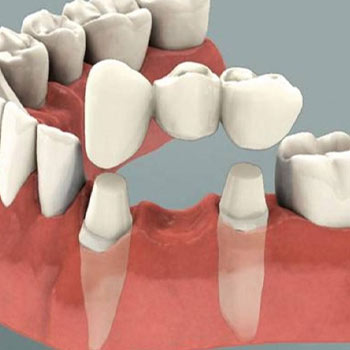Dental crowns and bridges are essential tools in restorative dentistry, designed to restore the function and appearance of your teeth. Whether you're dealing with damaged teeth or missing ones, these treatments offer durable solutions that blend seamlessly with your natural teeth. Let's delve deeper into what crowns and bridges entail and how they can benefit you.
What Are Dental Crowns?
Dental crowns, often referred to as caps, are prosthetic devices that encase a damaged or decayed tooth. They serve multiple purposes, including
- Protection: Crowns protect weakened teeth from further damage or fracture. They are crucial after root canal treatments to strengthen the tooth.
- Restoration: They restore the shape, size, and function of a tooth that has been significantly decayed or fractured
- Cosmetic Enhancement: Crowns can improve the appearance of misshapen or discolored teeth, enhancing your smile's aesthetics
Types of Dental Crowns
Modern crowns come in various materials, each offering unique advantages
- Porcelain-fused-to-metal (PFM): These crowns provide strength due to the metal base while maintaining a natural appearance with porcelain covering.
- All-ceramic or all-porcelain: Known for their excellent aesthetic qualities, these crowns are ideal for front teeth where natural appearance is paramount.
- Gold alloy: Gold crowns are highly durable and gentle on opposing teeth, making them suitable for molars
What is the Crown Placement Process?
Getting a dental crown typically involves two visits to your dentist:
Preparation
During the first visit, the dentist prepares the tooth by removing any decay and reshaping it to accommodate the crown. Impressions of the tooth are then taken to create a custom crown
Placement
Once the permanent crown is ready, usually within a few weeks, it is cemented onto your tooth, restoring its function and appearance
What Are Dental Bridges?
Dental bridges are used to replace one or more missing teeth, filling the gap between adjacent teeth. They consist of two main components
- Abutments: These are the natural teeth or dental implants on either side of the gap, which serve as anchors for the bridge
- Pontic: The artificial tooth (or teeth) that fills the gap and restores chewing function and aesthetics
Types of Dental Bridges
Similar to crowns, dental bridges come in various types depending on your specific needs
- Traditional bridges: These are the most common type, where the pontic is held in place by dental crowns placed on the abutment teeth
- Cantilever bridges: Used when there are adjacent teeth on only one side of the gap
- Maryland bonded bridges: These use a metal or porcelain framework bonded to the backs of adjacent teeth, making them a conservative option
What is the process for placing the bridge?
Getting a dental bridge typically requires several visits to your dentist
- Evaluation and Preparation: During the initial visit, the dentist examines your oral health and prepares the abutment teeth by reshaping them
- Impressions: Impressions of your teeth are taken to create a custom bridge that fits perfectly
- Temporary Bridge: While waiting for the permanent bridge, a temporary bridge may be placed to protect the exposed teeth and gums
- Placement: Once the permanent bridge is ready, it is cemented onto the abutment teeth, restoring your smile and bite
Choosing crowns and bridges offers several benefits
- Restored Function: They restore your ability to chew and speak properly.
- Improved Appearance: They enhance your smile by filling in gaps and covering damaged teeth
- Longevity: With proper care, crowns and bridges can last for many years
- Prevention: They prevent neighboring teeth from shifting out of position
How should one care for crowns and bridges?
Maintaining good oral hygiene practices is essential to ensure the longevity of your crowns and bridges
- Brushing and Flossing: Regular brushing and flossing help prevent decay and gum disease around the dental work
- Regular Dental Visits: Schedule regular dental check-ups to monitor the health of your crowns and bridges and address any issues early
Dental crowns and bridges are invaluable tools in restorative dentistry, offering functional and aesthetic solutions to various dental issues. Whether you need to repair a damaged tooth with a crown or replace missing teeth with a bridge, these treatments can significantly improve your oral health and restore your smile's natural beauty. Consult with your dentist to explore how crowns and bridges can benefit you and regain confidence in your smile.

